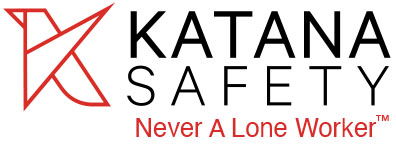GUIDE: Improving Lone Worker Safety
Understanding The World of Lone Worker Safety
Lone work can be defined as a potentially hazardous working condition that occurs when an individual cannot be seen or heard by another worker and where assistance is not readily available. Lone workers are found in every major U.S. industry. – The CDC
It is estimated there are 53 million lone workers in the United States, Canada, and Europe combined, accounting for roughly 15% of the overall workforce. (CDC)
From home health workers to insurance adjusters to bus drivers, all kinds of employees operate on their own for the majority of their workday. To understand this world of lone worker safety, you’ll need to know some basic terms.
Home-Based Health Care
Home-based health care can come in different forms including primary, urgent, or palliative care, provided in the confines of a patient’s home. Common services include skilled nursing, therapy, emotional support, caregiving, and more.
Remote/Lone Worker
While the term “remote worker” has evolved to mean something different post-COIVD, traditionally it refers to someone who performs their job with little or no contact or supervision. Remote or lone workers can be found in many industries but common examples include home health care, social service, engineering, surveying, construction, etc.
Risk Assessment
Standard practice for any company that employs lone workers, a risk assessment identifies and evaluates the potential hazards present in the workplace and outlines a plan of how they will be dealt with. The highest priority is identifying opportunities for violence and implementing personal protection measures to ensure worker safety.
Duty of Care
Duty of care comes from the OSHA General Duty Clause, Section 5(a)(1) which requires employers to provide their workers with a workplace free from recognized hazards that are likely to cause death or serious physical harm. If an organization’s actions don’t meet this standard of care, they can be considered negligent and held responsible in a court of law.
Understanding How KATANA Safety Protects Lone Workers
Lone worker protection is becoming an increasingly higher priority for employees and in turn, their employers. Low rates of worker retention and job satisfaction have placed a spotlight on the need to implement quick responses for inevitable workplace emergencies that will occur.
Personal Safety Solution
The KATANA personal safety solution offers lone workers the ability to directly access an emergency response team 24/7, should they encounter a dangerous or uncomfortable situation. Personal safety solutions allow employers to protect their workers and be immediately notified when a situation has occurred.
Quick-Access Device
A quick-access, or quick-trigger activation device is a hardware device that can set off an alarm at the push of a button. Our quick-access device, the KATANA mini, is the only device that when paired with a phone can bypass the phone’s lock screen and contact law enforcement.
Emergency Response Platform
The KATANA emergency response platform collects and securely shares emergency information from a network of connected devices (lone workers) to an emergency response team and the network administrator (employer). This information is used solely to track and respond to distress calls, as well as for companies to monitor the safety of the employees.
Remote Escort
A remote escort is a security service that provides users with a human chaperone who while not physically present, will remain with them virtually in real time until they have reached safety. KATANA’s Walk With Me function is an example of a remote escort where a member of our 24/7 response team will remain online with a user while they navigate an uncomfortable or potentially dangerous situation.
The world of lone worker safety has evolved significantly in recent years, with a much greater emphasis placed on being proactive rather than reactive. That said, many industries still have a long way to go. Between difficulties recruiting new employees and a decreasing rate of retaining current employees, many companies that employ lone workers recognize safety as a top priority.
